1. Questions that remain
1.1. How do you design for motivation?
1.2. Application in non-higher ed fields?
1.3. Are there supportive ecosystems for ID?
1.4. How can frustration be Prevented? Must students get to the threshold? concept first?
1.5. Has emphasis on learning evolved from inability to define teaching?
1.6. Does one think like a historian or merely need to understand what historians think?
2. High Impact Practices in Higher Ed (AACU, 2019)
2.1. ID should DESIGN:
2.1.1. 1st Year Experiences
2.1.2. Common Intellectual Experiences
2.1.3. Learning Communities
2.1.4. Service-Learning, Community-based Research
2.1.5. Internships
2.1.6. ePortfolios
2.1.7. Diversity/Goal Learning
2.1.8. Undergraduate Research
2.1.9. Collaborative Projects
2.1.10. Writing Intensitive Courses
2.1.11. Capstone Projects/Courses
3. Instructional Designers are Teachers (Morris, 2018)
3.1. Roles:
3.1.1. ID are Teachers of Teachers
3.1.2. ID are Teachers of Students
3.1.3. ID are Teachers of Institutions
3.2. Aim:
3.2.1. Make learning more meaningful
3.2.2. Not just instructional
3.2.3. Facilitate Connections
4. Threshold Concepts (Meyer & Land, 2003); a portal opening new frame of mind previously not accessible.
4.1. ID should IDENTIFY CHARACTERISTICS of a threshold concept:
4.1.1. Transformative - perceptual shift, identity impact.
4.1.2. Integrative - expose interrelatedness
4.1.3. Bounded - limited purpose, limited conceptional space
4.1.4. Irreversible - unforgettable, hard to unlearn
4.1.5. Troublesome - counter-intuitive, alien, incoherent (no organizing principle)
4.1.5.1. Inert Knowledge - unused knowledge; failure to integrate ie math & science
4.1.5.2. Ritual Knowledge - rote application without understanding, ie math formulas
4.1.5.3. Conceptually Difficult Knowledge - counter-intuitive, notions resurfice, ie data analysis
4.1.5.4. Alien Knowledge - from conflicting perspective
4.1.5.5. Tacit Knowledge - contains complexity; inconsistencies; subtle distinctions
4.1.5.6. Troublesome language - structure of language requires different concepts, ie 84 in French "quatre vingt quatre" (four twenties four)
5. Threshold Concepts & Troublesome knowledge (Land et al, 2005); implications for course design
5.1. ID should CONSIDER:
5.1.1. Sequence of content
5.1.2. The learner's Journey
5.1.3. How to recognize internalization; assessment
5.2. ID should DESIGN:
5.2.1. Embed Threshold Concepts as 'jewels' of curriculum
5.2.2. Active Student Engagements
5.2.3. Nurturing space for Reconstitution of Self
5.2.4. Metacognitive Strategies for Tolerating Uncertainty - growth mindset, self-regulation
5.3. ID should KEEP IN MIND:
5.3.1. Pre-liminal Variation
5.3.2. Recursiveness and excurseness
5.3.3. Underlying game - authorized vs alternative understandings
5.3.4. Unintented Consequences of Good Pedagogy
